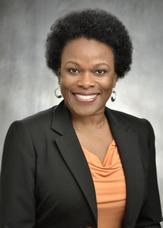
3-D Mammography Leads to Cancer Diagnosis in Hospital President
October 8, 2014 — Debra Flores, president of Sentara CarePlex Hospital, was three months late for her annual mammogram when she drove to the Dorothy G. Hoefer Comprehensive Breast Center for her scan. Months earlier, Flores had found money in her hospital’s budget to purchase the first 3-D mammography device, also known as tomosynthesis, to pilot the new technology for the Sentara Cancer Network. That afternoon, radiologist Kelley Allison, M.D., saw cancer in both of Debra’s breasts, including a tiny Stage ‘0’ tumor.
“Without 3-D mammography, that second tumor might have been missed,” said Flores. “In retrospect, my decision to purchase Sentara’s first 3-D mammography device was providential.”
After consulting with Sentara surgeon Richard Hoefer, M.D., Flores elected to have lumpectomy performed on both breasts and Hoefer prescribed six and a half weeks of daily radiation. Flores is now cancer free and committed to fulfilling a personal mission to encourage women to take responsibility for their bodies and demand 3-D mammography knowing firsthand the critical importance of earlier detection.
“This technology is a game changer,” Flores said. “Women need to take advantage of it.”
Clinical data suggests that 3-D mammography identifies smaller tumors at earlier stages than traditional digital mammography and reduces callbacks for biopsies, due to its ability to differentiate between benign masses and cancerous tumors, even in dense breast tissue. In a Sentara Cancer Network study of 1,400 breast cancers diagnosed through the use of 3-D technology, the following success metrics were revealed:
- 53% increase in diagnosis of invasive cancers
- 35% increase in diagnosis of cancers
- 38% reduction in callbacks
- 11% reduction in biopsies
“Sentara’s organizational structure and culture of innovation were essential for implementing this technology at eight sites across Virginia in less than one year,” said Allison, a fellowship-trained radiologist and co-chair of the Breast Program Leadership Committee of the Sentara Cancer Network. “I am proud that our committee led the way in evaluating and adopting this invaluable 3-D mammography service for patients.”
The Sentara Cancer Network performed almost 115,000 mammograms last year and diagnosed close to 1,400 breast cancers. Currently, Sentara Cancer Network is designing a 3-D mammography study to assess the impact of 3-D versus 2-D mammography, the current standard of care, on breast health and clinical outcomes.
For more information: www.sentara.com/cancer
